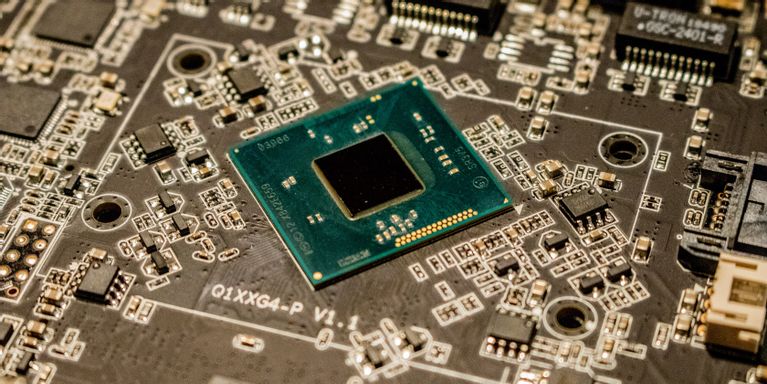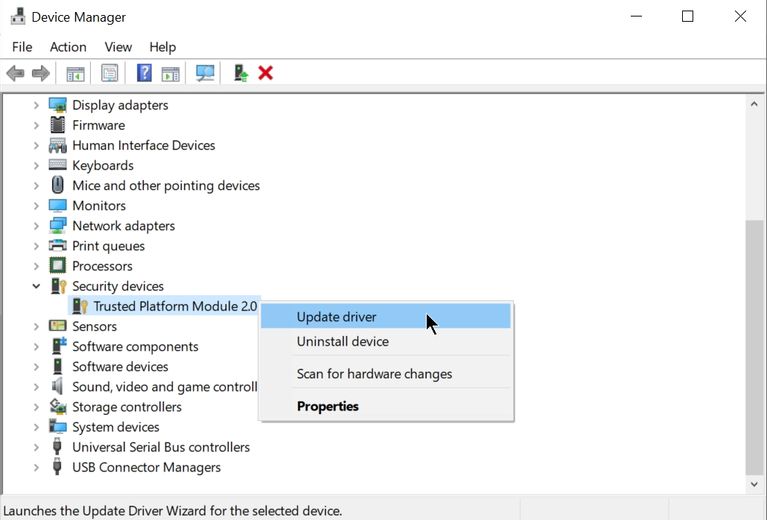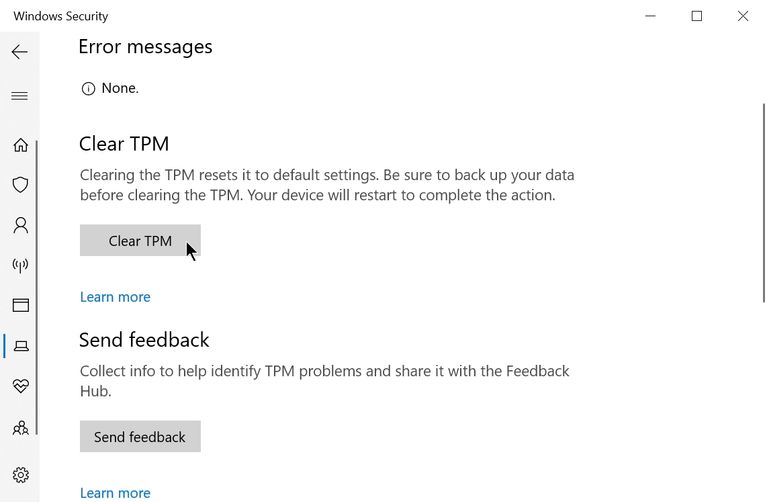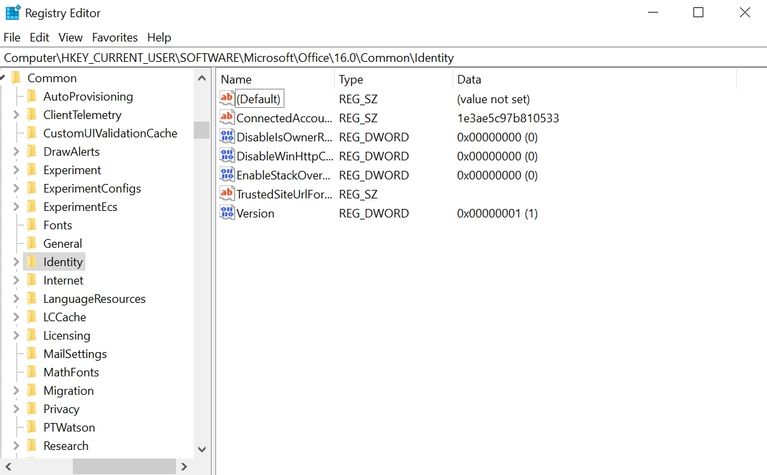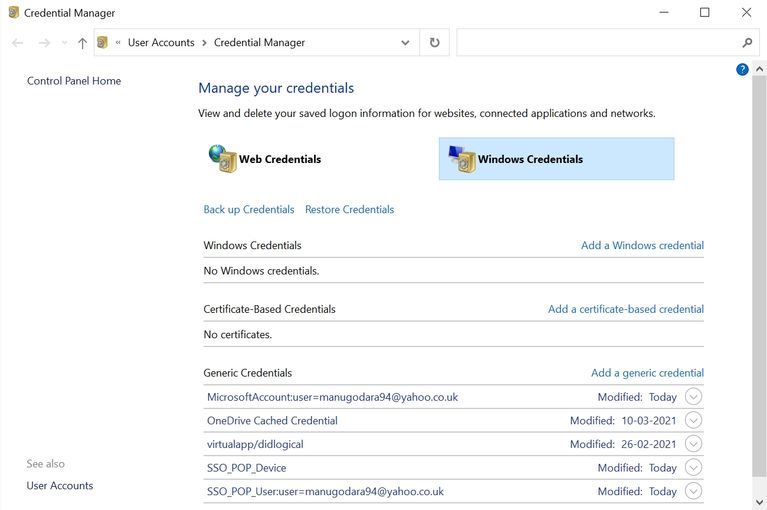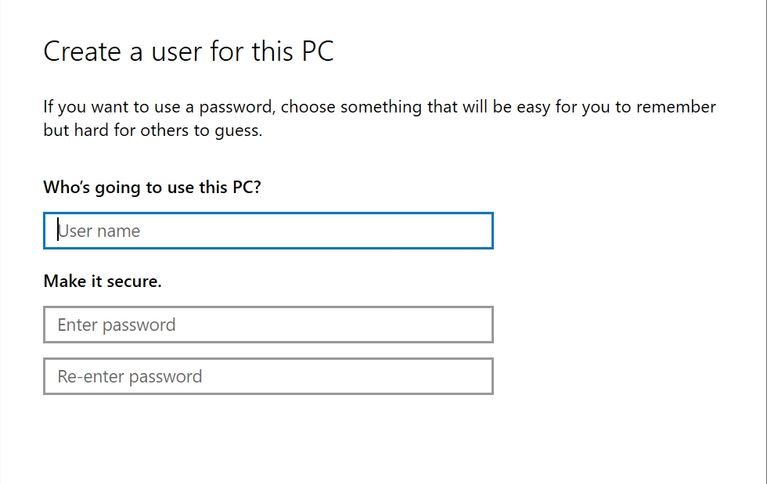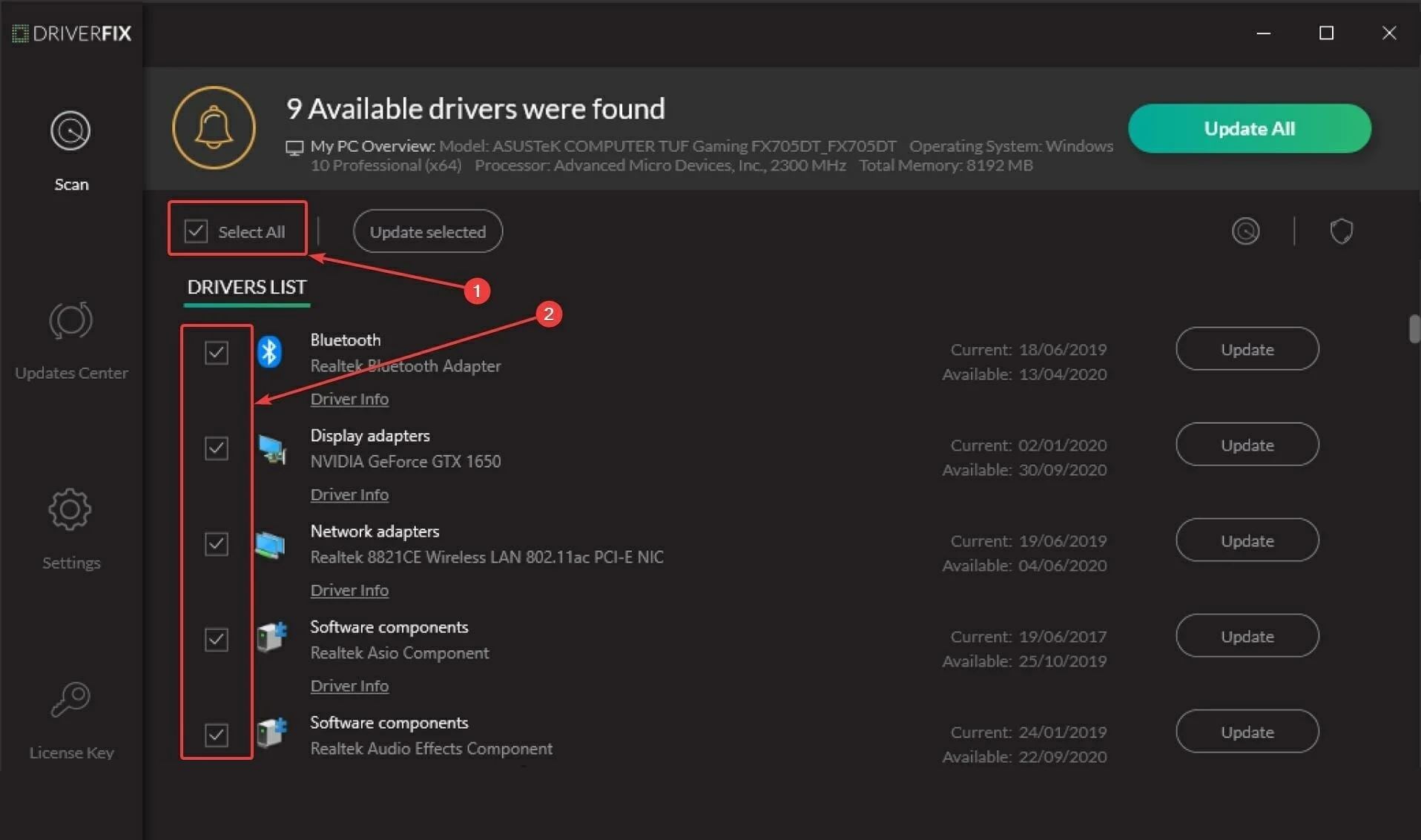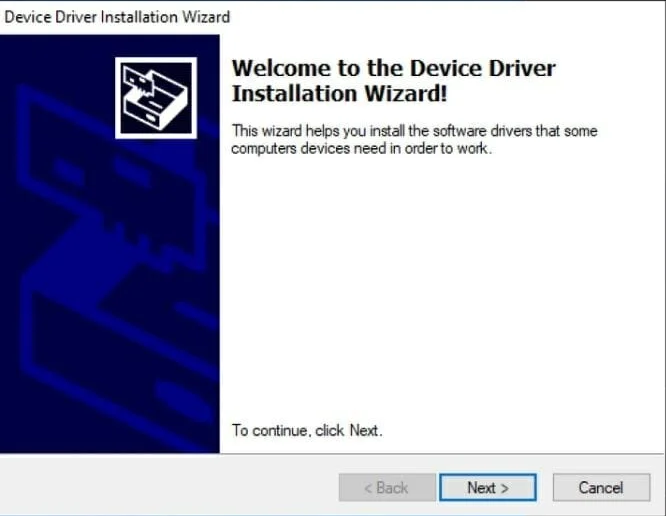Keep your computer’s BIOS TPM firmware updated
by Vladimir Popescu
Being an artist his entire life while also playing handball at a professional level, Vladimir has also developed a passion for all things computer-related. With an innate fascination… read more
Updated on
- TPM is a microcontroller designed to provide hardware-based security-related functions.
- It is very useful; however, if it encounters an error like event ID 15, it could cause issues.
- This guide will discuss all the causes and possible fixes to resolve the problem.
When your Trusted Platform Module hardware fails to execute a TPM command, you might see Event ID 15 in the Event Viewer app.
This guide will discuss all the available fixes for the problem right after examining the causes. Let’s begin!
What causes the Event ID 15 TPM error?
Generally, the error appears if you have a problem with the TPM device. Some of the reasons for the error are:
How we test, review and rate?
We have worked for the past 6 months on building a new review system on how we produce content. Using it, we have subsequently redone most of our articles to provide actual hands-on expertise on the guides we made.
For more details you can read how we test, review, and rate at WindowsReport.
- TPM fails to respond: When Windows is trying to communicate or use the TPM device for functionalities that respond on TPM, including Bit Locker and Next Generation Credentials, and it fails to respond, it could cause the Event ID error.
- TPM performing self-test – When TPM resumes from sleep, it performs a self-test before processing any commands. During self-testing, if Windows tries to retrieve a random number, but the command fails, then Windows will receive this error. If the command fails three consecutive times, the OS logs the event. Hence we see the error.
How can I fix the Event ID 15 TPM module error on Windows 10?
Before diving into serious troubleshooting, let us try these simple fixes first:
- Check for BIOS updates.
- Check whether TPM is on or off.
- Make sure Latest Servicing Stack Update (SSU) and monthly Cumulative Update (CU) in Windows are installed.
- Update your security processor (TPM).
- Enable TPM in BIOS.
If nothing from the above worked for you, it is time to move on to these troubleshooting steps:
1. Uninstall and reinstall the TPM driver
1.1 Use Device Manager
- Press Windows + R to get the Run window.
- Type devmgmt.msc and hit Enter.
- Now click on Security devices to expand, right-click on Trusted Platform Module, and select Uninstall driver.
- Reboot your computer. When your PC starts up, it will install the driver again.
1.2 Use a third-party tool
With driver updater utility like Outbyte Driver Updater, you can update drivers without hassles. It downloads the best compatible drivers for your device and installs them in a few clicks.
- Download and install Outbyte Driver Updater.
- Launch the app, and it will scan your computer for outdated drivers.
- Once the scan is complete, you will get a list of drivers.
- Select the drivers and click Update.
- The tool will download the latest and compatible drivers.
- Click Next, follow the on-screen prompts, then restart your computer.
Using automated tools has its advantages such as safely finding and updating outdated drivers and automatically installing new updates, saving time in all these processes.
⇒ Get Outbyte Driver Updater
2. Clear TPM
- Press the Windows key, type Windows Security, and click Open.
- Now navigate to Device Security. Click Security processor details.
- Click Security processor troubleshooting.
- Now click Clear TPM.
- Choose the positive response for the on-screen prompts to finish.
3. Disable Windows Credential Manager
- Press Windows + R to get the Run window.
- Type gpedit.msc and press Enter.
- Follow this path and double-click on Turn on Virtualization Based Security:
Computer Configuration\Administrative Templates\System\ Device Guard\Turn on Virtualization Based Security - Now under Credential Guard Configuration, select Disabled from the drop-down.
- Restart your PC.
4. Check if Core isolation is enabled
- Press the Windows key, type Windows Security and click Open.
- Now navigate to Device Security. Click Core isolation details.
- Make sure the toggle switch for Memory integrity is On.
5. In-place upgrade
- Go to Microsoft’s software download page, and choose the Windows version you want to install.
- Download Windows 11 ISO and select Windows 11 (multi-edition ISO).
- On Select, the product language option, choose English or your preferred language and click Confirm, and then Download.
- Right-click on ISO and select Mount. Now click Setup.exe.
- On Install Windows 11 dialog box, select Next.
- On the next screen, click Accept to agree to the license terms.
- Follow the on-screen prompts to complete the process.
Tip
Select Keep personal files and apps on the Ready to Install page to save your files from getting deleted.
So, these steps can be used to resolve the Event ID 15 source TPM error. If we have missed out on any method that worked for you, please let us know in the comments section below.
Both my wife and I have Asus ROG Crosshair VIII Hero (X570) motherboards (Asus BIOS 1302) with AMD Ryzen 7 3700X processors (AMD Chipset Software 2.04.28.626) that use the CPU’s fTPM ability set up in the BIOS. Occasionally, in the Windows 10 Event Viewer, we both get Event ID 12 and 15 events about TPM Device Driver Errors (I’ll include an example, below). At a guess, they might be happening upon waking from Sleep. My wife has also run into problems with her Windows 10 PIN when that happens and has to reboot to get it to work — I’m assuming the PIN is using the TPM for validation. I have no idea where to report this, so I thought I’d try here to see if anyone else is seeing it.
Log Name: System
Source: TPM
Date: 6/19/2020 7:48:32 PM
Event ID: 12
Task Category: None
Level: Error
Keywords:
User: N/A
Computer: WIN10-DAVE-X570
Description:
The device driver for the Trusted Platform Module (TPM) encountered an error in the TPM hardware, which might prevent some applications using TPM services from operating correctly. Please restart your computer to reset the TPM hardware. For further assistance on this hardware issue, please contact the computer manufacturer for more information.
Event Xml:
<Event xmlns=»http://schemas.microsoft.com/win/2004/08/events/event»>
<System>
<Provider Name=»TPM» Guid=»{1b6b0772-251b-4d42-917d-faca166bc059}» />
<EventID>12</EventID>
<Version>0</Version>
<Level>2</Level>
<Task>0</Task>
<Opcode>0</Opcode>
<Keywords>0x8000000000000000</Keywords>
<TimeCreated SystemTime=»2020-06-20T02:48:32.2444938Z» />
<EventRecordID>1962</EventRecordID>
<Correlation />
<Execution ProcessID=»4″ ThreadID=»332″ />
<Channel>System</Channel>
<Computer>WIN10-DAVE-X570</Computer>
<Security />
</System>
<EventData>
<Data Name=»locationCode»>0x1c000519</Data>
<Data Name=»Data»>3221225473</Data>
</EventData>
</Event>
and
Log Name: System
Source: TPM
Date: 6/19/2020 7:48:32 PM
Event ID: 15
Task Category: None
Level: Error
Keywords:
User: N/A
Computer: WIN10-DAVE-X570
Description:
The device driver for the Trusted Platform Module (TPM) encountered a non-recoverable error in the TPM hardware, which prevents TPM services (such as data encryption) from being used. For further help, please contact the computer manufacturer.
Event Xml:
<Event xmlns=»http://schemas.microsoft.com/win/2004/08/events/event»>
<System>
<Provider Name=»TPM» Guid=»{1b6b0772-251b-4d42-917d-faca166bc059}» />
<EventID>15</EventID>
<Version>0</Version>
<Level>2</Level>
<Task>0</Task>
<Opcode>0</Opcode>
<Keywords>0x8000000000000000</Keywords>
<TimeCreated SystemTime=»2020-06-20T02:48:32.2444899Z» />
<EventRecordID>1961</EventRecordID>
<Correlation />
<Execution ProcessID=»4″ ThreadID=»332″ />
<Channel>System</Channel>
<Computer>WIN10-DAVE-X570</Computer>
<Security />
</System>
<EventData>
<Data Name=»locationCode»>0x220003ac</Data>
<Data Name=»Data»>3221225862</Data>
</EventData>
</Event>
Windows 10: Constant BSOD — TPM Error Event ID 15
Discus and support Constant BSOD — TPM Error Event ID 15 in Windows 10 Gaming to solve the problem; Nearly everyday for the past couple of months, I have experienced multiple blue screens. The error code that shows on the BSOD changes every time, some…
Discussion in ‘Windows 10 Gaming’ started by LittleSilverOwl, Dec 11, 2022.
-
Constant BSOD — TPM Error Event ID 15
Nearly everyday for the past couple of months, I have experienced multiple blue screens. The error code that shows on the BSOD changes every time, some times its IRQL_NOT_LESS_OR_EQUAL, sometimes its SYSTEM_SERVICE_EXCEPTION, etc. However, event viewer shows me a TPM error pretty much every time I blue screen which is as follows: «The device driver for the Trusted Platform Module TPM encountered a non-recoverable error in the TPM hardware, which prevents TPM services such as data encryption from being used. For further help, please contact the computer manufacturer» Event ID 15. I don’t
-
Event Viewer Error -TPM -Event ID 15
So this error continuously pop up in my event viewer.
Description —
General —
The device driver for the Trusted Platform Module (TPM) encountered a non-recoverable error in the TPM hardware, which prevents TPM services (such as data encryption) from being used. For further help, please contact the computer manufacturer.
Details -> XML View ->
— <Event xmlns=»http://schemas.microsoft.com/win/2004/08/events/event«>
— <System>
<Provider Name=»TPM» Guid=»{1b6b0772-251b-4d42-917d-faca166bc059}» />
<EventID>15</EventID>
<Version>0</Version>
<Level>2</Level>
<Task>0</Task>
<Opcode>0</Opcode>
<Keywords>0x8000000000000000</Keywords>
<TimeCreated SystemTime=»2020-06-03T01:12:46.812144800Z» />
<EventRecordID>54387</EventRecordID>
<Correlation />
<Execution ProcessID=»4» ThreadID=»444» />
<Channel>System</Channel>
<Computer>illuSioniSt</Computer>
<Security/>
</System>
— <EventData>
<Data Name=»locationCode«>0x1c0004f3</Data>
<Data Name=»Data«>3221225524</Data>
</EventData>
</Event>
ASUS X541-UV Laptop
Windows 10 1909(Build 18363.719), 8GB, 1TB
-
BSOD since 23/07, Critical Error Kernel Power- event ID 41
Zbook,
Thankyou very much for your reply. In relation to your first post, I have carried out steps 10-22 (apart from step 15, I will attempt to leave it running with this tonight). The screenshots are attached. I have also uninstalled the programmes detailed above. Unfortunately, as my laptop is a custom built from PCSpecialist, they do not provide BIOS updates anywhere easily accessible. I will phoen them today and see if there are any updates.
Kind Regards
Ash
-
Constant BSOD — TPM Error Event ID 15
Event Viewer Error -TPM -Event ID 15
Hi pes,
I am Sumit, an Independent Advisor and a 3 year Windows Insider MVP here to help.
That’s a tpm error. tpm ==>trusted platform module that prevents unauthorized changes to your computer.
Please check for BIOS updates on your computer:
https://www.asus.com/Laptops/ASUS-VivoBook-Max-…
Constant BSOD — TPM Error Event ID 15
-
Constant BSOD — TPM Error Event ID 15 — Similar Threads — Constant BSOD TPM
-
BSOD with Event ID 15 TPM every half an hour
in Windows 10 Gaming
BSOD with Event ID 15 TPM every half an hour: Hi,It’s been a year since my PC randomly went to BSOD every half an hour.So now I want to get rid of it as it is so annoying and distracts me.I checked Event Viewer and said it was the problem of «TPM» with an error message of «The device driver for the Trusted Platform… -
BSOD with Event ID 15 TPM every half an hour
in Windows 10 Software and Apps
BSOD with Event ID 15 TPM every half an hour: Hi,It’s been a year since my PC randomly went to BSOD every half an hour.So now I want to get rid of it as it is so annoying and distracts me.I checked Event Viewer and said it was the problem of «TPM» with an error message of «The device driver for the Trusted Platform… -
BSOD with Event ID 15 TPM every half an hour
in Windows 10 BSOD Crashes and Debugging
BSOD with Event ID 15 TPM every half an hour: Hi,It’s been a year since my PC randomly went to BSOD every half an hour.So now I want to get rid of it as it is so annoying and distracts me.I checked Event Viewer and said it was the problem of «TPM» with an error message of «The device driver for the Trusted Platform… -
Event id 14 tpm error while playing Valorant.
in Windows 10 Gaming
Event id 14 tpm error while playing Valorant.: I’m only getting these errors when playing valorant. I’ve done everything even reinstalling windows 11. I’ve also tested this on two different pc that use AMD cpu and get the same results.PC specswindows 117950x3d Ryzen CPUX670E taichi motherboard32gb 6000 mhz ramXFX 7900XTX… -
Event ID 14 TPM Errors
in Windows 10 Gaming
Event ID 14 TPM Errors: I’ve just contacted riot gaming about this Event ID 14 tpm on my event viewer. I’ve asked it before and done everything that was told of me to do from microsoft, AMD, and Riot gaming but I can’t fix the issue. It only happens if I play Valorant which belongs to riot gaming… -
Event ID 14 TPM Errors
in Windows 10 Software and Apps
Event ID 14 TPM Errors: I’ve just contacted riot gaming about this Event ID 14 tpm on my event viewer. I’ve asked it before and done everything that was told of me to do from microsoft, AMD, and Riot gaming but I can’t fix the issue. It only happens if I play Valorant which belongs to riot gaming… -
Constant BSOD — TPM Error Event ID 15
in Windows 10 Software and Apps
Constant BSOD — TPM Error Event ID 15: Nearly everyday for the past couple of months, I have experienced multiple blue screens. The error code that shows on the BSOD changes every time, some times its IRQL_NOT_LESS_OR_EQUAL, sometimes its SYSTEM_SERVICE_EXCEPTION, etc. However, event viewer shows me a TPM error… -
Constant BSOD — TPM Error Event ID 15
in Windows 10 BSOD Crashes and Debugging
Constant BSOD — TPM Error Event ID 15: Nearly everyday for the past couple of months, I have experienced multiple blue screens. The error code that shows on the BSOD changes every time, some times its IRQL_NOT_LESS_OR_EQUAL, sometimes its SYSTEM_SERVICE_EXCEPTION, etc. However, event viewer shows me a TPM error… -
Event Viewer Error -TPM -Event ID 15
in AntiVirus, Firewalls and System Security
Event Viewer Error -TPM -Event ID 15: So this error continuously pop up in my event viewer.Description —
General —
The device driver for the Trusted Platform Module TPM encountered a non-recoverable error in the TPM hardware, which prevents TPM services such as data encryption from being used. For further…

На чтение 3 мин Опубликовано Обновлено
Код ошибки TPM 15 является одним из наиболее распространенных кодов ошибок, с которыми сталкиваются пользователи компьютеров и ноутбуков. Эта ошибка связана с проблемами работы Trusted Platform Module (TPM) — аппаратного устройства, ответственного за безопасность системы и хранение ключей.
Существует несколько причин, по которым может возникнуть код ошибки TPM 15. Одной из самых распространенных причин является отключение TPM в BIOS компьютера. Если есть необходимость использования TPM, проверьте настройки BIOS и активируйте TPM, если он отключен.
Еще одной причиной может быть несовместимость TPM с операционной системой. Убедитесь, что у вас установлена последняя версия операционной системы, и что она поддерживает работу с TPM. Также важно обновить драйверы устройства, так как устаревшие драйверы могут вызывать ошибку TPM 15.
Для исправления ошибки TPM 15 можно воспользоваться несколькими способами. Во-первых, попробуйте перезагрузить компьютер или ноутбук и проверьте, появляется ли ошибка снова. Иногда простая перезагрузка может решить проблему. Во-вторых, убедитесь, что TPM активирован в BIOS. Если TPM был отключен, активируйте его и сохраните изменения.
Причины возникновения ошибки TPM 15
Ошибка TPM 15 может возникать по разным причинам. Ниже приведены некоторые из них:
- Проблемы с оборудованием: неправильная установка или повреждение TPM-модуля, короткое замыкание, проблемы с кабелями и т. д.
- Программные проблемы: неправильная установка драйверов TPM, конфликты с другими установленными программами, несовместимость операционной системы и т. д.
- Обновление TPM: если TPM модуль не обновлялся долгое время, это может вызвать ошибку TPM 15 из-за сбоя в работе модуля или устаревших настроек.
- Проблемы с BIOS: устаревшая версия BIOS, настройки BIOS, несовместимость TPM с BIOS и т. д.
Важно отметить, что причиной ошибки TPM 15 может быть не только один фактор, а их комбинация. Поэтому для точного выявления причин и исправления ошибки рекомендуется обратиться к специалисту или изучить детальную информацию о своей системе и TPM модуле.
Способы исправления ошибки TPM 15
Ошибки, связанные с модулем TPM (Trusted Platform Module), могут приводить к проблемам со входом в систему, работой программ и безопасностью компьютера. Код ошибки TPM 15 указывает на неспособность выполнить запрошенную операцию из-за проблем с TPM.
Вот несколько способов исправления ошибки TPM 15:
- Обновите BIOS. В некоторых случаях причиной ошибки TPM 15 может быть устаревшая версия BIOS. Проверьте наличие обновлений BIOS на веб-сайте производителя компьютера или материнской платы и установите последнюю версию.
- Перезагрузите компьютер. Простая перезагрузка может помочь восстановить работу TPM. Выключите компьютер полностью, подождите несколько секунд и затем снова включите.
- Отключите и включите TPM в BIOS. При включении компьютера нажмите определенную клавишу (обычно Delete или F2), чтобы войти в BIOS. Найдите раздел Security (Безопасность) или Advanced (Дополнительно) и найдите опцию, связанную с TPM. Отключите TPM, сохраните изменения и перезагрузите компьютер. Затем повторите те же шаги, чтобы включить TPM.
- Проверьте наличие обновлений драйверов TPM. Перейдите на официальный сайт производителя компьютера или материнской платы и найдите последнюю версию драйверов TPM. Установите их на компьютер.
- Проверьте целостность TPM. В некоторых случаях причиной ошибки TPM 15 может быть повреждение модуля TPM или его неправильное подключение. Обратитесь к руководству пользователя или обратитесь к специалисту, чтобы проверить целостность TPM.
Если ни один из этих способов не помог исправить ошибку TPM 15, рекомендуется обратиться за помощью к квалифицированному специалисту или службе поддержки производителя компьютера.
TPM отлично справляется с обеспечением безопасности, пока не перестанет работать. Вот как это исправить.
Trusted Platform Module (TPM) — это аппаратный механизм безопасности, используемый для аутентификации на компьютере. Иногда TPM может работать неправильно, в результате чего пользователи не получают доступ к таким приложениям, как Outlook или Microsoft Office. Имеется несколько способов исправить ошибку TPM.
Выполните чистую загрузку
Первым шагом при устранении распространённых ошибок Windows является выполнение чистой загрузки. Это позволяет проверить, не вызывает ли проблему стороннее программное обеспечение. Сторонние приложения нередко конфликтуют с Windows. Вот как выполняется чистая загрузка компьютера:
- В меню «Пуск» введите в поиске msconfig. Среди результатов нажмите «Конфигурация системы».
- В следующем окне нажмите на вкладку «Службы».
- Установите флажок «Не отображать службы Microsoft».
- Затем выберите все службы в окне и нажмите «Отключить всё».
- Нажмите OK и закройте конфигурацию системы.
- Теперь нажмите CTRL + Shift + Esc, чтобы запустить диспетчер задач.
- На вкладке «Автозагрузка» нажмите на каждую службу по очереди и нажмите «Отключить».
- Нажмите ОК и закройте диспетчер задач.
- Перезагрузите компьютер.
Если ошибка не появляется, удалите все недавно установленные сторонние приложения. Затем отмените внесённые вами изменения и используйте компьютер как обычно.
Измените драйвер TPM 2.0 — код ошибки: 80090016
Один из наиболее распространённых кодов ошибки «Доверенный платформенный модуль неисправен» — 80090016. Для её устранения необходимо внести изменения в драйвер TPM.
Обновление драйвера TPM 2.0
Первым шагом в устранение этой ошибки является обновление драйвера TPM. Сделать это можно с помощью диспетчера устройств:
- Нажмите Windows Key + R, чтобы открыть окно «Выполнить». В текстовом поле введите devmgmt.msc и нажмите ввод, чтобы запустить диспетчер устройств.
- В окне диспетчера устройств перейдите к «Устройства безопасности» и разверните меню. Нажмите правой кнопкой мыши Trusted Platform Module 2.0 и выберите «Обновить драйвер».
- В появившемся окне нажмите «Автоматический поиск драйверов».
- Windows автоматически загрузит и установит последнюю версию драйвера TPM 2.0.
- Перезагрузите компьютер.
Удаление драйвера TPM 2.0
Если обновление TPM 2.0 не помогло, возможно, пришло время полностью удалить драйвер и позволить Windows переустановить его при следующей загрузке.
- Нажмите Windows Key + R, чтобы запустить окно «Выполнить». Введите devmgmt.msc в текстовое поле и нажмите ввод, чтобы запустить диспетчер устройств.
- В диспетчере устройств прокрутите вниз до «Устройства безопасности» и разверните меню.
- Нажмите правой кнопкой мыши Trusted Platform Module 2.0 и выберите «Удалить устройство».
- Нажмите «Удалить» в окне подтверждения.
- Перезагрузите компьютер.
Ещё один способ решения проблемы заключается в очистке TPM. Перед этим сделайте резервную копию всех важных данных на компьютере. Читайте руководства по резервному копированию Windows, чтобы узнать, какие файлы и папки нужно копировать обязательно.
Очистка TPM
- Нажмите на кнопку «Пуск» и откройте приложение «Параметры».
- Перейдите в раздел «Обновление и безопасность».
- В панели навигации слева нажмите «Безопасность Windows».
- Нажмите «Безопасность устройства», а в разделе «Процессор безопасности» нажмите «Сведения о процессоре безопасности».
- Нажмите «Устранение неполадок процессора безопасности». В следующем окне нажмите «Очистить TPM».
Отключение современной проверки подлинности — Microsoft Office
Это решение предназначено для пользователей, которые не могут получить доступ к Microsoft Office из-за ошибки Trusted Platform Module. Решение включает в себя изменение некоторых записей в редакторе реестра Windows:
- Нажмите Windows Key + R для запуска окна «Выполнить». Введите regedit и нажмите ввод.
- Перейдите по адресу
HKEY_CURRENT_USERSOFTWAREMicrosoftOffice16.0CommonIdentity
- Нажмите правой кнопкой мыши на пустое пространство в окне и выберите Создать > Значение DWORD (32 бита).
- Назовите новую запись EnableADAL, а затем дважды нажмите по ней.
- Установите значение 0.
- Закройте редактор реестра и перезагрузите компьютер.
Станьте владельцем папки Ngc и удалите её
Ещё один простой способ устранить сбой TPM заключается в удалении папки Ngc. Её можно найти на диске C:, но для удаления требуется быть владельцем папки. Вот как это можно сделать:
- Откройте проводник и перейдите:
C:WindowsServiceProfilesLocalServiceAppDataLocalMicrosoft
- Найдите папку Ngc и нажмите на неё правой кнопкой мыши, затем выберите «Свойства».
- На вкладке «Безопасность» нажмите «Дополнительно».
- В разделе «Владелец» нажмите «Изменить». Для этого вам потребуются права администратора.
- В текстовом поле введите имя пользователя локальной учётной записи (которую вы используете в этот момент) и нажмите «Проверить имена».
- Нажмите ОК. Установите флажок «Заменить владельца подконтейнеров и объектов».
- Нажмите OK.
- Дважды нажмите, чтобы открыть папку Ngc и удалить все её содержимое.
- Перезагрузите компьютер.
Удаление учётных данных приложения из диспетчера учётных данных
Этот вариант применим для пользователей, которые сталкиваются с проблемой при запуске приложений Microsoft, таких как Outlook или Microsoft Office. Метод включает в себя удаление учётных данных соответствующего приложения с помощью диспетчера учётных данных:
- Нажмите кнопку «Пуск» и введите в поиск «диспетчер учётных данных». Откройте соответствующее окно.
- Нажмите «Учётные данные Windows».
- В разделе «Общие учётные данные» выберите все учётные данные Microsoft Office и нажмите стрелку вправо, чтобы развернуть их.
- Затем нажмите «Удалить» рядом с «Редактировать».
- Удаляйте данные по одному за раз.
- Перезагрузите компьютер.
Вход с использованием новой учётной записи локального пользователя
Если ни одно из вышеупомянутых решений не сработало, можно создать новую учётную запись пользователя и использовать её для входа в Windows и Microsoft Office. Это легко сделать в приложении «Параметры»:
- Нажмите кнопку «Пуск» и выберите «Параметры».
- Перейдите в раздел «Учётные записи».
- На панели навигации слева нажмите «Семья и другие пользователи».
- В разделе «Другие пользователи» нажмите «Добавить пользователя для этого компьютера».
- В мастере создания пользователей нажмите «У меня нет данных для входа этого пользователя».
- В следующем окне выберите «Добавить пользователя без учётной записи Microsoft».
- Заполните все поля и нажмите ОК.
- Перезагрузите компьютер и войдите в систему, используя только что созданную учётную запись пользователя.
Неполадка «Сбой TPM» может быть сложной для устранения из-за множества связанных с ней кодов ошибок. Одно из перечисленных исправлений обязательно поможет вам разрешить ситуацию.
Об авторе
Александр
Специалист по информационной безопасности с 10-ти летним опытом. Отец троих детей. Независимый консультант по вопросам кибер безопасности. 6 лет опыта интеграции решений кибербезопасности с другими продуктами в существующих инфраструктурах на корпоративном уровне.
Both my wife and I have Asus ROG Crosshair VIII Hero (X570) motherboards (Asus BIOS 1302) with AMD Ryzen 7 3700X processors (AMD Chipset Software 2.04.28.626) that use the CPU’s fTPM ability set up in the BIOS. Occasionally, in the Windows 10 Event Viewer, we both get Event ID 12 and 15 events about TPM Device Driver Errors (I’ll include an example, below). At a guess, they might be happening upon waking from Sleep. My wife has also run into problems with her Windows 10 PIN when that happens and has to reboot to get it to work — I’m assuming the PIN is using the TPM for validation. I have no idea where to report this, so I thought I’d try here to see if anyone else is seeing it.
Log Name: System
Source: TPM
Date: 6/19/2020 7:48:32 PM
Event ID: 12
Task Category: None
Level: Error
Keywords:
User: N/A
Computer: WIN10-DAVE-X570
Description:
The device driver for the Trusted Platform Module (TPM) encountered an error in the TPM hardware, which might prevent some applications using TPM services from operating correctly. Please restart your computer to reset the TPM hardware. For further assistance on this hardware issue, please contact the computer manufacturer for more information.
Event Xml:
<Event xmlns=»http://schemas.microsoft.com/win/2004/08/events/event»>
<System>
<Provider Name=»TPM» Guid=»{1b6b0772-251b-4d42-917d-faca166bc059}» />
<EventID>12</EventID>
<Version>0</Version>
<Level>2</Level>
<Task>0</Task>
<Opcode>0</Opcode>
<Keywords>0x8000000000000000</Keywords>
<TimeCreated SystemTime=»2020-06-20T02:48:32.2444938Z» />
<EventRecordID>1962</EventRecordID>
<Correlation />
<Execution ProcessID=»4″ ThreadID=»332″ />
<Channel>System</Channel>
<Computer>WIN10-DAVE-X570</Computer>
<Security />
</System>
<EventData>
<Data Name=»locationCode»>0x1c000519</Data>
<Data Name=»Data»>3221225473</Data>
</EventData>
</Event>
and
Log Name: System
Source: TPM
Date: 6/19/2020 7:48:32 PM
Event ID: 15
Task Category: None
Level: Error
Keywords:
User: N/A
Computer: WIN10-DAVE-X570
Description:
The device driver for the Trusted Platform Module (TPM) encountered a non-recoverable error in the TPM hardware, which prevents TPM services (such as data encryption) from being used. For further help, please contact the computer manufacturer.
Event Xml:
<Event xmlns=»http://schemas.microsoft.com/win/2004/08/events/event»>
<System>
<Provider Name=»TPM» Guid=»{1b6b0772-251b-4d42-917d-faca166bc059}» />
<EventID>15</EventID>
<Version>0</Version>
<Level>2</Level>
<Task>0</Task>
<Opcode>0</Opcode>
<Keywords>0x8000000000000000</Keywords>
<TimeCreated SystemTime=»2020-06-20T02:48:32.2444899Z» />
<EventRecordID>1961</EventRecordID>
<Correlation />
<Execution ProcessID=»4″ ThreadID=»332″ />
<Channel>System</Channel>
<Computer>WIN10-DAVE-X570</Computer>
<Security />
</System>
<EventData>
<Data Name=»locationCode»>0x220003ac</Data>
<Data Name=»Data»>3221225862</Data>
</EventData>
</Event>
Keep your computer’s BIOS TPM firmware updated
by Vladimir Popescu
Being an artist his entire life while also playing handball at a professional level, Vladimir has also developed a passion for all things computer-related. With an innate fascination… read more
Published on November 27, 2022
Reviewed by
Alex Serban
After moving away from the corporate work-style, Alex has found rewards in a lifestyle of constant analysis, team coordination and pestering his colleagues. Holding an MCSA Windows Server… read more
- TPM is a microcontroller designed to provide hardware-based security-related functions.
- It is very useful; however, if it encounters an error like event ID 15, it could cause issues.
- This guide will discuss all the causes and possible fixes to resolve the problem.
XINSTALL BY CLICKING THE DOWNLOAD FILE
This software will repair common computer errors, protect you from file loss, malware, hardware failure and optimize your PC for maximum performance. Fix PC issues and remove viruses now in 3 easy steps:
- Download Restoro PC Repair Tool that comes with Patented Technologies (patent available here).
- Click Start Scan to find Windows issues that could be causing PC problems.
- Click Repair All to fix issues affecting your computer’s security and performance
- Restoro has been downloaded by 0 readers this month.
When your Trusted Platform Module hardware fails to execute a TPM command, you might see Event ID 15 in the Event Viewer app.
This guide will discuss all the available fixes for the problem right after examining the causes. Let’s begin!
What causes the Event ID 15 TPM error?
Generally, the error appears if you have a problem with the TPM device. Some of the reasons for the error are:
- TPM fails to respond: When Windows is trying to communicate or use the TPM device for functionalities that respond on TPM, including Bit Locker and Next Generation Credentials, and it fails to respond, it could cause the Event ID error.
- TPM performing self-test – When TPM resumes from sleep, it performs a self-test before processing any commands. During self-testing, if Windows tries to retrieve a random number, but the command fails, then Windows will receive this error. If the command fails three consecutive times, the OS logs the event. Hence we see the error.
How can I fix the Event ID 15 TPM module error on Windows 10?
Before diving into serious troubleshooting, let us try these simple fixes first:
- Check for BIOS updates.
- Check whether TPM is on or off.
- Make sure Latest Servicing Stack Update (SSU) and monthly Cumulative Update (CU) in Windows are installed.
- Update your security processor (TPM).
- Enable TPM in BIOS.
If nothing from the above worked for you, it is time to move on to these troubleshooting steps:
1. Uninstall and reinstall the TPM driver
1.1 Use Device Manager
- Press Windows + R to get the Run window.
- Type devmgmt.msc and hit Enter.
- Now click on Security devices to expand, right-click on Trusted Platform Module, and select Uninstall driver.
- Reboot your computer. When your PC starts up, it will install the driver again.
1.2 Use a third-party tool
With driver updater utility like DriverFix, you can update drivers without hassles. It downloads the best compatible drivers for your device and installs them in a few clicks.
- Download and install Driverfix.
- Launch the app, and it will scan your computer for outdated drivers.
- Once the scan is complete, you will get a list of drivers.
- Select the drivers and click Update.
- The tool will download the latest and compatible drivers.
- Click Next, follow the on-screen prompts, then restart your computer.
Using automated tools has its advantages such as safely finding and updating outdated drivers and automatically installing new updates, saving time in all these processes.
⇒ Get DriverFix
2. Clear TPM
- Press the Windows key, type Windows Security, and click Open.
- Now navigate to Device Security. Click Security processor details.
- Click Security processor troubleshooting.
- Now click Clear TPM.
- Choose the positive response for the on-screen prompts to finish.
3. Disable Windows Credential Manager
- Press Windows + R to get the Run window.
- Type gpedit.msc and press Enter.
- Follow this path and double-click on Turn on Virtualization Based Security:
Computer ConfigurationAdministrative TemplatesSystem Device GuardTurn on Virtualization Based Security - Now under Credential Guard Configuration, select Disabled from the drop-down.
- Restart your PC.
4. Check if Core isolation is enabled
- Press the Windows key, type Windows Security and click Open.
- Now navigate to Device Security. Click Core isolation details.
- Make sure the toggle switch for Memory integrity is On.
5. In-place upgrade
- Go to Microsoft’s software download page, and choose the Windows version you want to install.
- Download Windows 11 ISO and select Windows 11 (multi-edition ISO).
- On Select, the product language option, choose English or your preferred language and click Confirm, and then Download.
- Right-click on ISO and select Mount. Now click Setup.exe.
- On Install Windows 11 dialog box, select Next.
- On the next screen, click Accept to agree to the license terms.
- Follow the on-screen prompts to complete the process.
Tip
Select Keep personal files and apps on the Ready to Install page to save your files from getting deleted.
So, these steps can be used to resolve the Event ID 15 source TPM error. If we have missed out on any method that worked for you, please let us know in the comments section below.
Still having issues? Fix them with this tool:
SPONSORED
If the advices above haven’t solved your issue, your PC may experience deeper Windows problems. We recommend downloading this PC Repair tool (rated Great on TrustPilot.com) to easily address them. After installation, simply click the Start Scan button and then press on Repair All.
Newsletter
Trusted Platform Module (TPM) — это аппаратная мера безопасности, используемая для аутентификации вашего ПК. Иногда TPM может работать неправильно, в результате чего пользователи не могут получить доступ к таким приложениям, как Outlook или Microsoft Office. К счастью, есть несколько способов исправить ошибку сбоя TPM.
Выполните чистую загрузку
Первым шагом в устранении распространенных ошибок Windows является выполнение чистой загрузки, чтобы проверить, не является ли стороннее программное обеспечение причиной проблемы. Стороннее программное обеспечение нередко конфликтует с вашим ПК с Windows. Вот как можно выполнить чистую загрузку компьютера:
-
В строке поиска меню «Пуск» введите sysconfig. В результатах поиска щелкните Конфигурация системы.
-
В следующем окне щелкните вкладку Services.
-
Установите флажок Скрыть все службы Microsoft.
-
Затем выберите все службы, перечисленные в окне, и нажмите Отключить все.
-
Щелкните OK и закройте конфигурацию системы.
-
Теперь нажмите CTRL + Shift + Esc, чтобы запустить диспетчер задач.
-
На вкладке «Автозагрузка» щелкните каждую службу по очереди и нажмите «Отключить».
-
Нажмите ОК и закройте Диспетчер задач.
-
Перезагрузите компьютер.
Если ошибка не появляется, удалите все недавно установленные сторонние приложения. Затем отмените внесенные вами изменения и используйте свой компьютер как обычно. В качестве альтернативы посмотрите, как выполнить чистую загрузку в Windows 10, чтобы лучше понять, как работает этот процесс.
Измените драйвер TPM 2.0 — код ошибки: 80090016
Один из наиболее распространенных кодов ошибки «Доверенный платформенный модуль неисправен» — 80090016. Для ее устранения необходимо вмешаться в драйвер TPM.
Обновите драйвер TPM 2.0
Первым шагом в диагностике этой ошибки является обновление драйвера TPM. Сделать это можно с помощью диспетчера устройств:
-
Нажмите Windows Key + R, чтобы открыть приложение «Выполнить». В текстовом поле введите devmgmt.msc и нажмите Enter, чтобы запустить диспетчер устройств.
-
В окне диспетчера устройств перейдите к «Устройства безопасности» и разверните меню. Щелкните правой кнопкой мыши Trusted Platform Module 2.0 и выберите «Обновить драйвер».
-
В приглашении к обновлению выберите Автоматический поиск драйверов.
-
Windows автоматически загрузит и установит последнюю версию драйвера TPM 2.0.
-
Перезагрузите компьютер.
Связано: что такое доверенный платформенный модуль (TPM)?
Удалите драйвер TPM 2.0.
Если обновление TPM 2.0 не помогло, возможно, пришло время полностью удалить его и позволить Windows переустановить при следующей загрузке.
-
Нажмите Windows Key + R, чтобы запустить приложение «Выполнить». Введите devmgmt.msc в текстовое поле и нажмите Enter, чтобы запустить Диспетчер устройств.
-
В диспетчере устройств прокрутите вниз до «Устройства безопасности» и разверните меню.
-
Щелкните правой кнопкой мыши Trusted Platform Module 2.0 и выберите Удалить устройство.
-
Нажмите Удалить в окне подтверждения.
-
Перезагрузите компьютер.
Другой жизнеспособный метод решения этой проблемы — очистить TPM. Перед этим обязательно сделайте резервную копию всех важных данных, которые могут храниться на вашем компьютере. Прочтите наше удобное руководство по резервному копированию WIndows, чтобы узнать, какие файлы и папки вы обязательно должны резервировать.
Очистка TPM
-
Нажмите кнопку «Пуск» и перейдите в «Настройки».
-
На панели настроек нажмите «Обновление и безопасность».
-
На панели навигации слева нажмите Безопасность Windows.
-
Теперь нажмите «Безопасность устройства», а в разделе «Процессор безопасности» нажмите «Сведения о процессоре безопасности».
-
Щелкните Устранение неполадок процессора безопасности. В следующем окне нажмите Clear TPM.
Отключить современную проверку подлинности — Microsoft Office
Это решение предназначено для пользователей, которые не могут получить доступ к Microsoft Office из-за ошибки Trusted Platform Module. Решение включает изменение некоторых записей в редакторе реестра Windows:
-
Нажмите Windows Key + R, чтобы запустить приложение «Выполнить». Введите regedit в текстовое поле и нажмите Enter.
-
Перейдите к: HKEY_CURRENT_USER SOFTWARE Microsoft Office 16.0 Common Identity
-
Щелкните правой кнопкой мыши пустое пространство в окне и выберите «Создать»> «Значение DWORD (32 бита)».
-
Назовите новую запись EnableADAL, а затем дважды щелкните по ней.
-
Установите значение 0.
-
Закройте редактор реестра и перезагрузите компьютер.
Связанный: Ultimate Microsoft Mastery: советы, приемы и руководства для вас
Станьте владельцем папки Ngc и удалите ее
Еще один простой способ устранить ошибку сбоя TPM — удалить папку Ngc. Его можно найти на диске C: , но для его удаления требуется право собственности. Вот как это можно сделать:
-
Откройте проводник и перейдите к: C: Windows ServiceProfiles LocalService AppData Local Microsoft
-
Найдите папку с именем Ngc и щелкните ее правой кнопкой мыши, затем выберите «Свойства».
-
На вкладке «Безопасность» нажмите «Дополнительно».
-
В разделе «Владелец» нажмите «Изменить». Для этого вам потребуются права администратора.
-
В текстовом поле введите имя пользователя локальной учетной записи (то, что вы используете в настоящее время) и нажмите Проверить имена.
-
Щелкните ОК. Установите флажок Заменить владельца подконтейнеров и объектов.
-
Щелкните по ОК.
-
Дважды щелкните, чтобы открыть папку Ngc и удалить все ее содержимое.
-
Перезагрузите компьютер.
Удалите учетные данные приложения из диспетчера учетных данных
Это исправление применимо для пользователей, которые сталкиваются с этой проблемой при запуске приложения Microsoft, такого как Outlook или Microsoft Office. Метод включает удаление учетных данных соответствующего приложения с помощью диспетчера учетных данных:
-
В строке поиска меню «Пуск» введите Диспетчер учетных данных. В результатах поиска нажмите Credential Manager.
-
Щелкните Учетные данные Windows.
-
В разделе Общие учетные данные выберите все учетные данные Microsoft Office и щелкните стрелку вправо, чтобы развернуть их.
-
Затем нажмите «Удалить» рядом с «Правка».
-
Вам придется делать это по одному.
-
Перезагрузите компьютер.
Вход с использованием новой учетной записи локального пользователя
Если ни одно из вышеупомянутых решений не работает, все, что вы можете сделать, это создать новую учетную запись пользователя и использовать ее для входа в Windows и Microsoft Office. Это легко сделать в приложении «Настройки Windows»:
-
Нажмите кнопку «Пуск» и выберите «Настройки».
-
На панели настроек нажмите «Учетные записи».
-
На панели навигации слева нажмите Семья и другие пользователи.
-
В разделе «Другие пользователи» нажмите «Добавить кого-нибудь на этот компьютер».
-
В мастере создания пользователей нажмите «У меня нет данных для входа этого пользователя».
-
В следующем окне выберите «Добавить пользователя без учетной записи Microsoft».
-
Заполните все поля и нажмите ОК.
-
Перезагрузите компьютер и войдите в систему, используя только что созданную учетную запись пользователя.
Устранена неисправность TPM
Ошибка «TPM имеет сбой» может быть сложной ошибкой для устранения из-за множества связанных с ней кодов ошибок. Но одно из перечисленных исправлений обязательно поможет вам избавиться от этого.
Currently getting BSOD once or twice a day, but I don’t know how to fix it.
I’m on windows 10, which is up to date. ASUS b450-i motherboard, running latest BIOS firmware.
When I check the Event Viewer after a crash this is some of the errors;
Kernal-Power — Event ID 41: «The system has rebooted without cleanly shutting down first. This error could be caused if the system stopped responding, crashed, or lost power unexpectedly.»
TPM — Event ID 15: «The device driver for the Trusted Platform Module (TPM) encountered a non-recoverable error in the TPM hardware, which prevents TPM services (such as data encryption) from being used. For further help, please contact the computer manufacturer.»
BTHUSB — Event ID 34: «The local adapter does not support an important Low Energy controller state to support peripheral mode. The minimum required supported state mask is 0x2491f7fffff; got 0xffffffff. Low Energy peripheral role functionality will not be available.»
BugCheck — Event ID 1001: «The computer has rebooted from a bugcheck. The bugcheck was: 0x00000139 (0x0000000000000004, 0xffffad017546e8e0, 0xffffad017546e838, 0x0000000000000000). A dump was saved in: C:WINDOWSMEMORY.DMP. Report Id: c74e7575-adf9-4e4e-8813-193965ae00c1.»

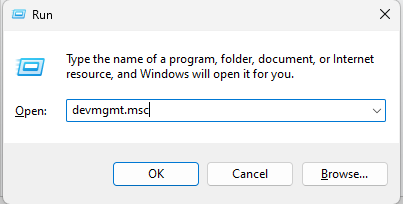

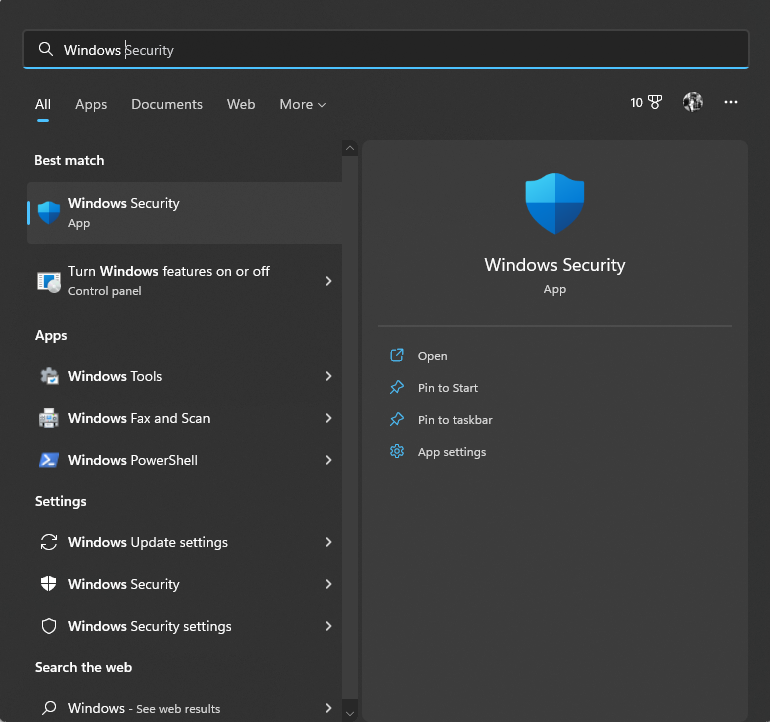
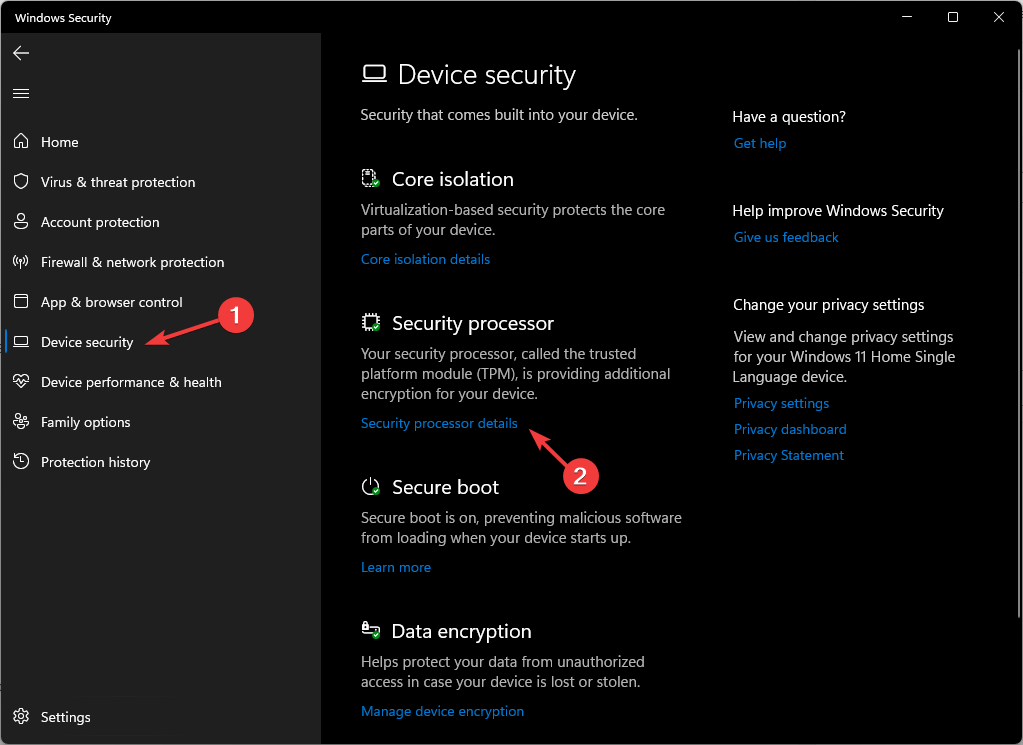
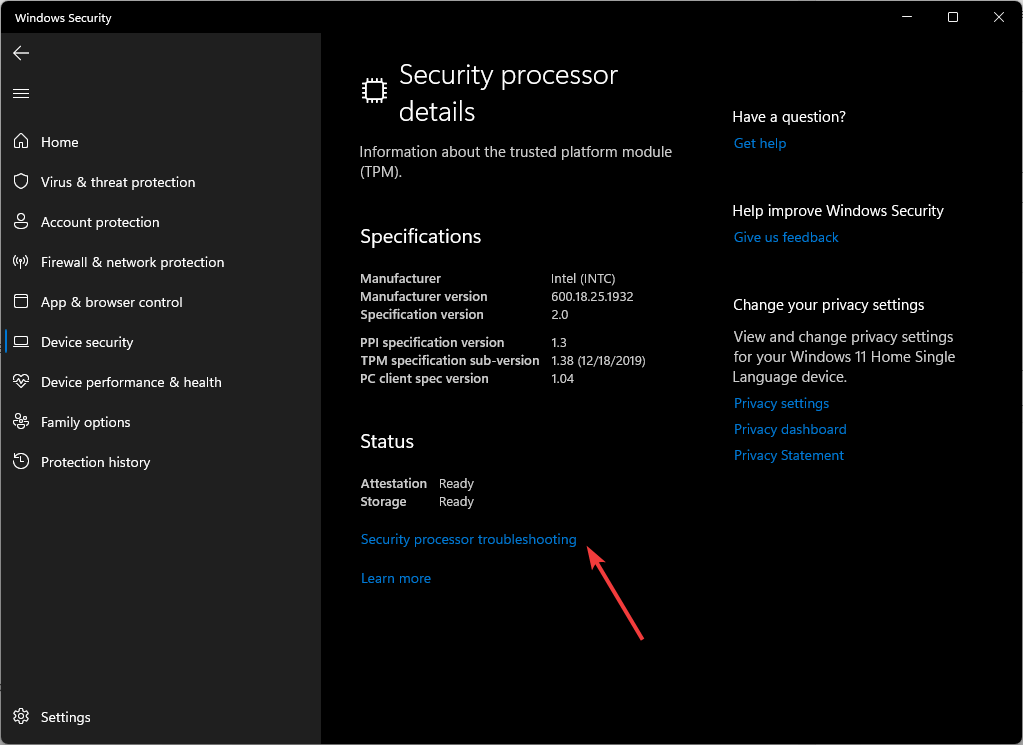

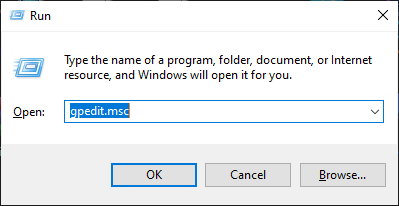
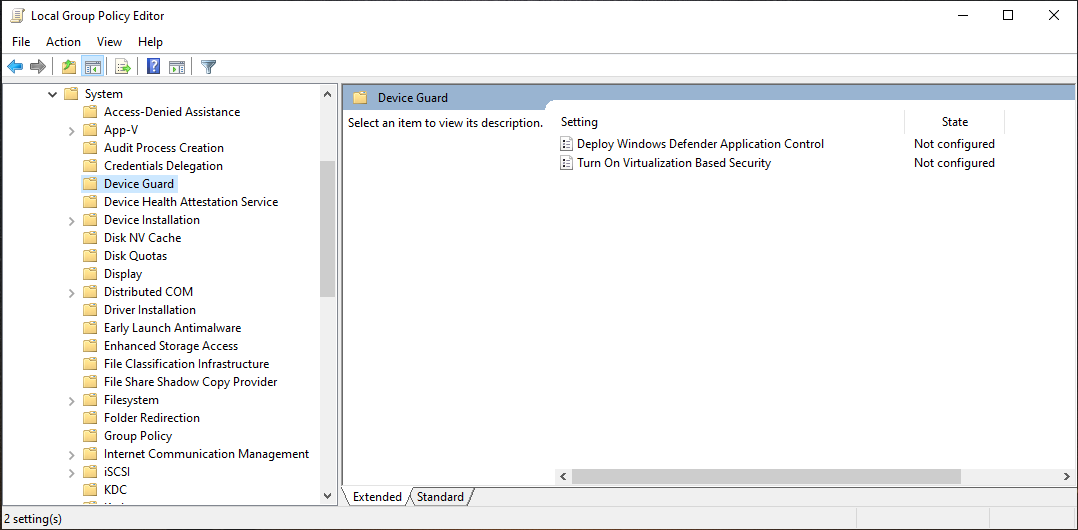


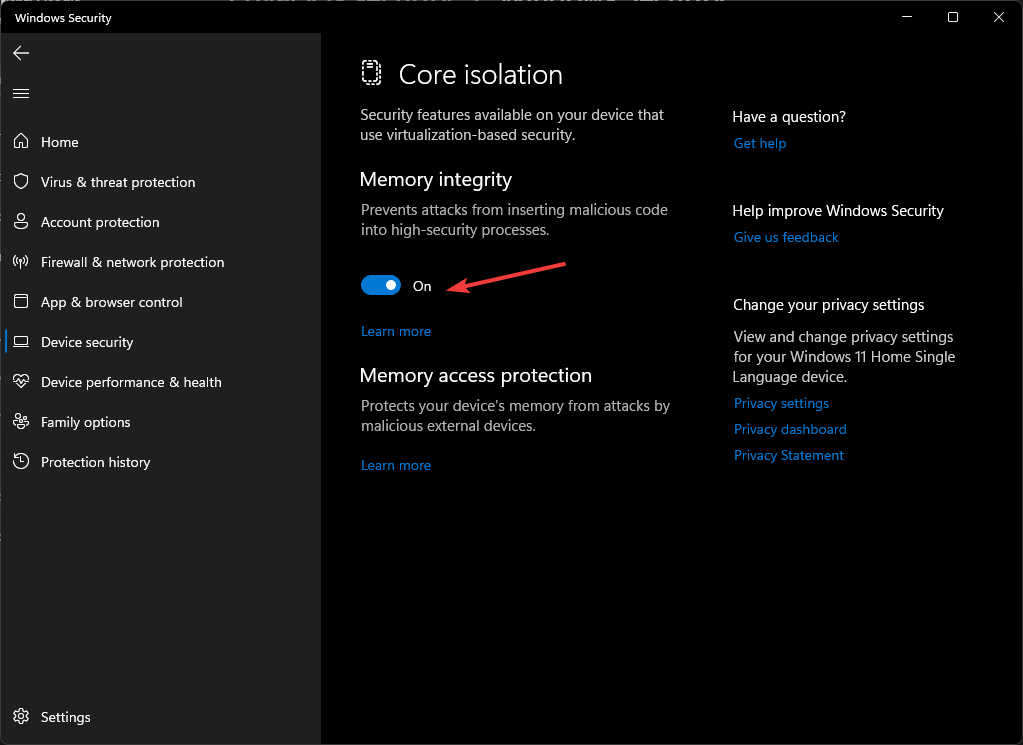
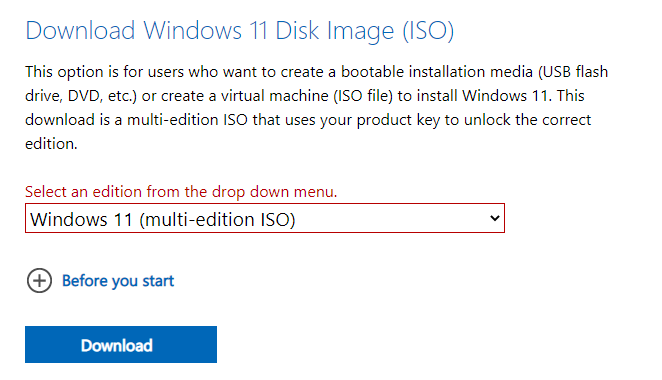

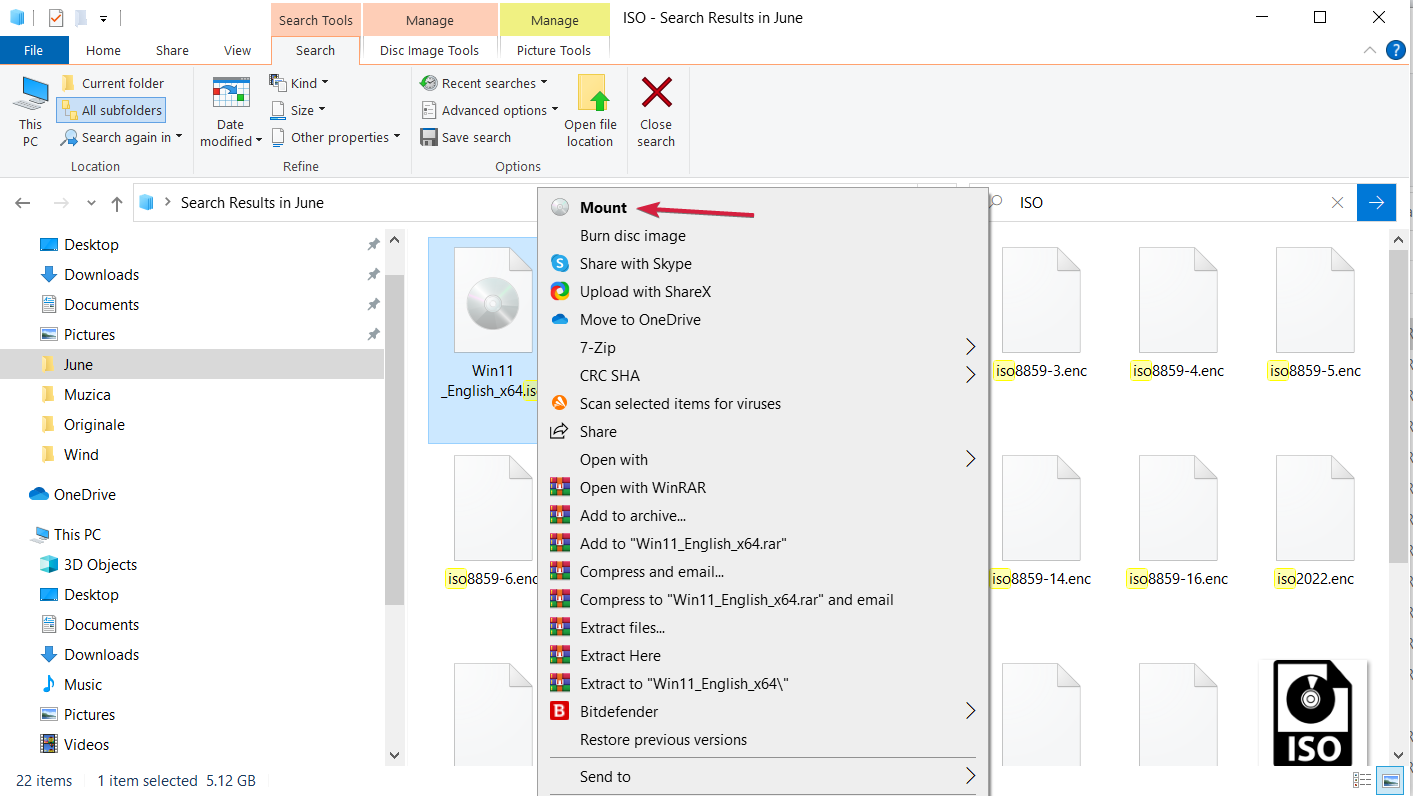


![Constant BSOD - TPM Error Event ID 15 Constant BSOD - TPM Error Event ID 15 [IMG]](https://www.windowsphoneinfo.com/threads/constant-bsod-tpm-error-event-id-15.866042/proxy.php?image=https%3A%2F%2Fwww.tenforums.com%2Fattachments%2Fbsod-crashes-debugging%2F241603d1564383061t-bsod-since-23-07-critical-error-kernel-power-event-id-41-a-screenshot-9-.png&hash=e2c18657b3c6d3931823181e087e5914)
![Constant BSOD - TPM Error Event ID 15 Constant BSOD - TPM Error Event ID 15 [IMG]](https://www.windowsphoneinfo.com/threads/constant-bsod-tpm-error-event-id-15.866042/proxy.php?image=https%3A%2F%2Fwww.tenforums.com%2Fattachments%2Fbsod-crashes-debugging%2F241604d1564383061t-bsod-since-23-07-critical-error-kernel-power-event-id-41-a-screenshot-10-.png&hash=6c883ae401bf456210b4cb5424eb66e6)
